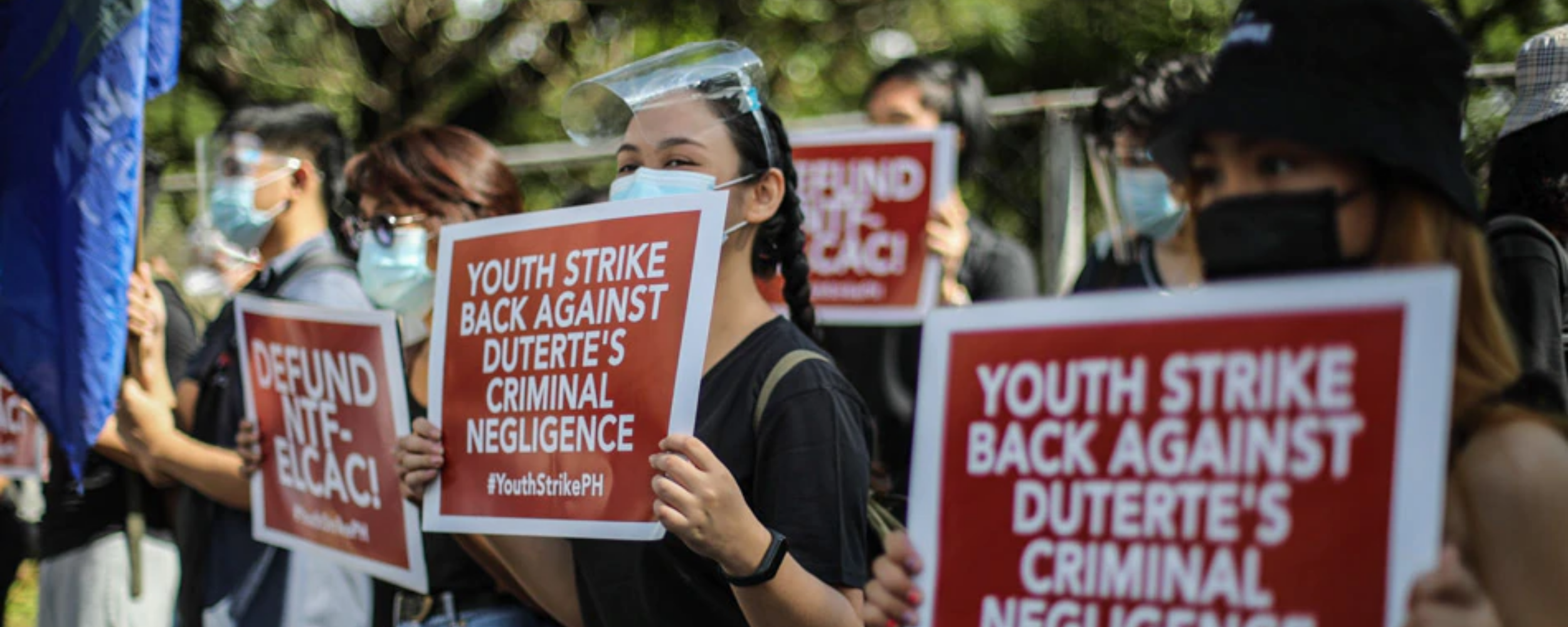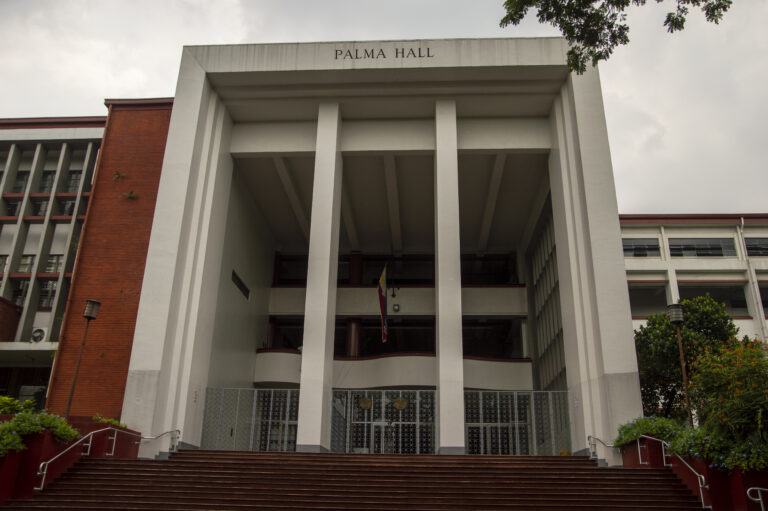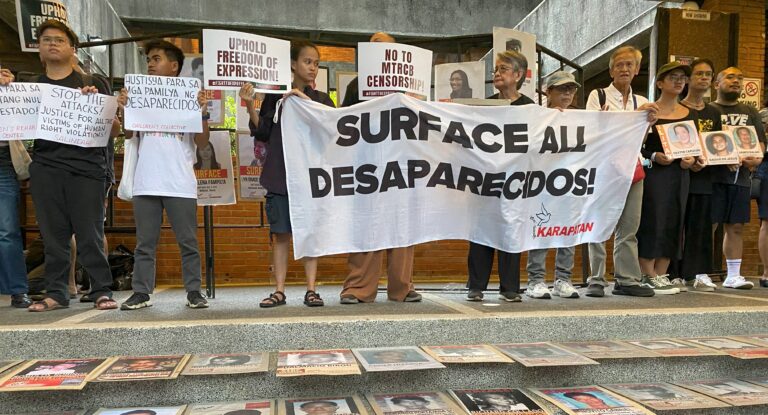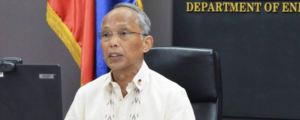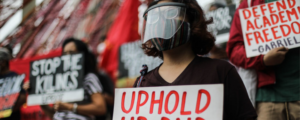
“I am sure you will agree with me when I say that the greatest adventure on earth today is our struggle for freedom. The pain and the sacrifice are staggering. The battles are historical and the victory shall be truly glorious indeed.”
These were some of the striking words that Lean Alejandro wrote in a letter for his former mentor Prof. Rita Estrada, which describes his experiences of incarceration. As one of the most influential activists during the Marcos dictatorship, Lean was a great example of an activist who was firmly anchored on political struggle and intellectual clarification.
Even up to now, students have always been a potent force in social organization and change in Philippine society. However, how exactly did this student movement come to be?
It can be traced back to the 1950s when the movement started against the anti-communist witchhunt of US forces and it also served as a battle for academic freedom. Filipino students began to pay attention to the realities of American intervention in the Philippines such as the parity rights issue (right given to US to exploit our country’s resources) and the RP-US Military Bases Agreement.
According to a study of Patricio Abinales, the 1960s saw the resurgence of nationalism and the rise of mass movement in campuses that “questioned the basic roots of Philippine underdevelopment, challenged the established institutions of power, and came up with an alternative that could spell transformation of Philippine society.”
From this, we saw the emergence of a new breed of activists who chose to reject the status quo and brought forward a radical alternative.
In 1964, Kabataang Makabayan (KM) was founded which became a launching pad for ideological and armed struggles. This made students realize how issues within their campuses should not be separated from what is happening outside.
These three fundamental ills of Philippine society were defined to be “imperialism, feudalism and bureaucrat capitalism.” Another group on the forefront was the Student Cultural Association of the University of the Philippines (SCAUP) who at first, held several educational discussions aiming to propagate ideas of national democracy within UP since 1959..
As Jose Maria Sison, then chairman of SCAUP and KM, penned that genuine student power comes from the integration of students with the toiling masses of workers and peasants.
The First Quarter Storm
In November 1969, Marcos became the first president ever to win a reelection in the Philippines and it was done in the most violent and fraudulent campaign the country had ever seen. The students, already disdainful of a political system dominated by elitist, foreign-subservient, and ideologically indistinguishable parties, reacted to this reelection outside the ballot.
Student unrest peaked in January 1970 with the outbreak of three months of violent demonstrations that would become known as the First Quarter Storm.
It began on January 26 when Marcos and his wife stepped out of the Congress building following the delivery of his State of the Nation Address (SONA). From there, the then-moderate National Union of Students of the Philippines (NUSP) organized a mobilization to call for a non-partisan Constitutional Convention.
Other groups including KM, Samahan ng Demokratikong Kabataan and other peasant organizations were present to lend their support to the cause.
The entire First Quarter Storm marked the genesis of the student movement, totally breaking the “four walls of the classroom” since it had chosen to merge itself with the broader movement for national liberation and social change.
It also gave way to other monumental events such as the Plaza Miranda bombing, the rise and fall of Diliman Commune, and the suspension of the writ of habeas corpus. Protests and demonstrations would continue until September 1972, when Ferdinand Marcos officially declared martial law.
The Crushing Blow of Martial Law
It was a dark and challenging time as the Martial Law practically crushed mass movements and drove activists to mobilize underground. Organizations and activists were forced to go underground amidst an increasing repressive dictatorship.
Despite this, the National Democratic movement remained resilient by recognizing the need to develop actions in the so-called ”open and legal arena.” They were to articulate basic sectoral problems like school fee increase, restoration of student councils, press freedom, and the students’ right to form organizations.
The imposition of tuition fee hikes in 1977 also provoked a reaction and protest from thousands of students. This led to the foundation of the League of Filipino Students (LFS), which is considered as one of the largest student-organized groups in Philippine politics. Aside from the tuition fee struggle, they also recognized the need for actions to advance not only the students’ but also the masses’ rights and welfare.
In 1983, the assassination of the late Senator Benigno “Ninoy” Aquino Jr. triggered a wave of protests that would eventually bring the Marcos dictatorship to an end. It was mainly the youth — with their energies and drive — who acted on their anger and brought it to the streets.
Students from various colleges and universities joined the street protests led by opposition leaders afterward. During this time, the social democratic (SD) student movement also came into prominence SD student groups have linkages in private and non-sectarian schools, usually with student councils, however without a solid mass base to speak of if to be compared with NDs.
The Post-EDSA Movement
The crisis of post-EDSA student activism is also symptomatic of the internal struggles within the National Democratic movement—between the Reaffirmists and Rejectionists to the Party’s call to rectify errors and reaffirm basic principles.
Intense ideological struggles gave birth to various organizational expressions of different political lines along the Philippine Left. The manifest change is the proliferation of many youth and student organizations, albeit the ND’s capacity to maintain a consolidated youth force.
In 1998, the NDs established the militant youth group Anakbayan to emulate the spirit of KM in leading the youth in what Alejandro would call “in the line of fire” where struggle is most needed.
Undoubtedly, as the crisis exacerbated, student activism was a topic of discussion again in the years 2000 and 2001 since many educational institutions joined strikes in hope of calling for the resignation of then President Estrada. In UP alone, anecdotes say around 15,000 students went to EDSA to oust Estrada.
Yuko Kasuya, a professor of Political Science, shared how “the experience of the 1986 People Power Revolution enhanced these groups’ efforts in calling for Estrada’s resignation by street mobilization.”
This continued up until Erap was finally ousted from his office in what was to be known as “EDSA People Power 2” in January 2001. Estrada refused to recognize the validity of this and still blamed collusion among certain groups, including the academe, for his dismissal.
The student movement continued to turn the parliament of the streets as their universities. The youth has struggled against Arroyo’s Oplan Bantay Laya and Hello Garci Scandal. Militancy fueled the youth’s rage against the UP Budget Cut in 2011, the PDAF scam, and the APEC 2015 deal under Noynoy Aquino.
With our current political situation, the aforementioned events can also be likened with the students’ current sentiments under Duterte. Many students have continued to join different political movements in the past years in protest against the government’s repressive actions such as the passage of the Anti-Terror Bill and the numerous attacks on academic and press freedom.
Amidst all of these threats, the question still remains. Is there still a chance for the national government to heed to the call of students? History may serve as a warning and a guide for the government and students alike. While not all mobilizations came out as a success, we cannot deny how influential students have been in the social organizations and changes that have happened in Philippine history.
This has proved how the youth, especially when united together and united with other oppressed sectors, has the ability to challenge those in power.
As the battlecry resounds the universities and the streets: “Ang kabataang makabayan, lumalaban!”
Featured image courtesy of Jire Carreon.

